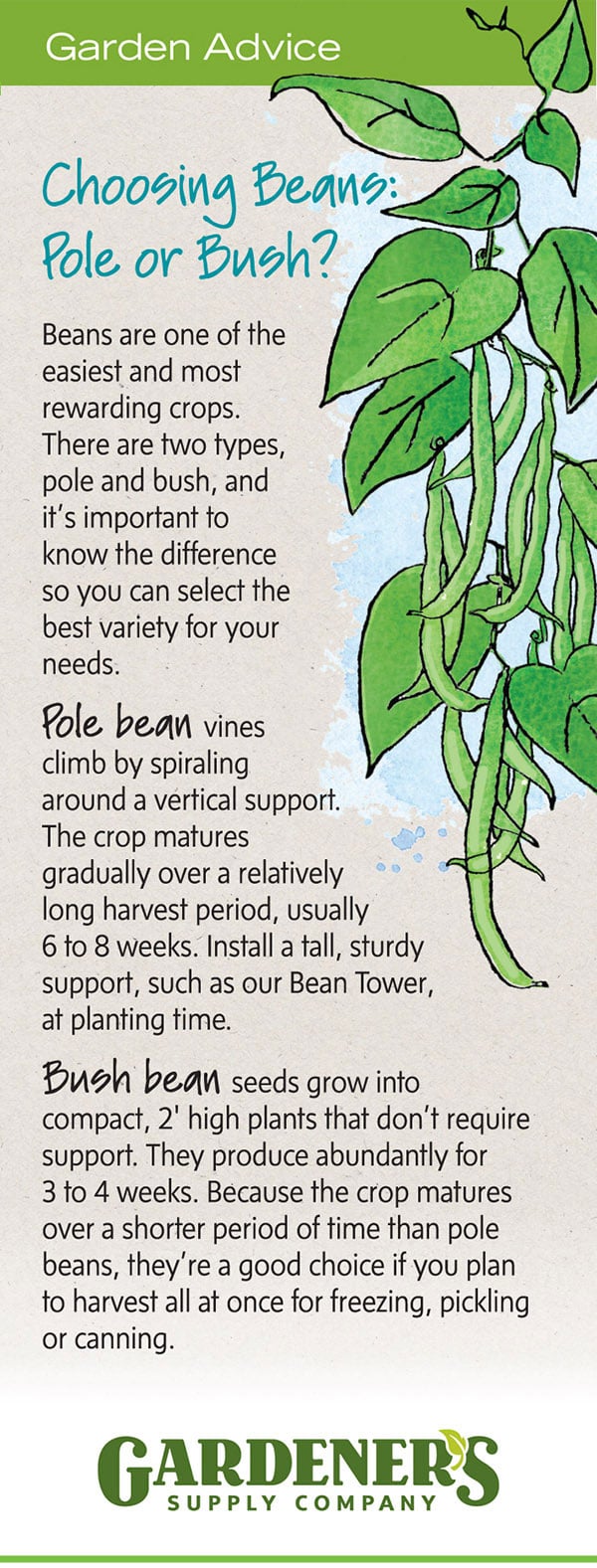Your cart is currently empty!

Tips For Growing Bush Beans

Growing bush beans is a great way to add a large harvest to your garden. They don’t need much space and are a perfect addition to raised beds or small containers.
Plant the seeds of your favorite bean variety in well-drained soil that is rich in organic matter. They thrive in full sun and need water regularly to grow properly.
Planting
Bush beans are among the most prolific vegetables you can grow in a garden. Second only to tomatoes, they’re a great way to fix nitrogen in the soil and boost your vegetable supply.
As a rule, they’re quick to germinate and can produce an abundant crop in as little as two weeks after they’re planted. They require good soil, water, and sunlight.
When planting, sow the seeds about 1 inch deep and three inches apart in rows that are 18 to 24 inches apart (bush beans) or 24 to 48 inches apart (shell beans). Once the seedlings sprout, they’ll need regular irrigation.
Soil Preparation
Bush beans grow best in well drained, organic material rich soil. They can be planted in garden beds or in raised bed gardens.
They also do well in containers. If your soil is poor, consider adding aged compost and fertilizer.
Ideally, the soil should be neutral or slightly acidic with a pH of 6.0 to 6.8. If it is not, add lime.
If you have clay soil, amend it with peat moss or sand. This will improve its structure and reduce the risk of root rot.
Depending on the bean variety you plant, they may require a certain amount of nitrogen to help them grow. But if the plants are prepared properly at planting time, they should produce enough nitrogen for their own needs.
Watering
Bush beans are one of the easiest vegetables to grow, and they don’t require any extra care beyond basic planting and watering. Just make sure they get two to three inches of water a week, either from rainfall or by irrigating yourself.
Beans do well in full sun with well-drained soil. Avoid overwatering as wet soils promote root rot diseases and slow plant growth.
Fertilizing
When growing bush beans, it is important to fertilize with a balanced fertilizer. This helps to ensure that the plants receive all the nutrients they need to grow healthy and strong.
The amount of fertilizer you need depends on the variety you’re growing. However, it is generally recommended that you fertilize once or twice a year.
Fertilize with an all-purpose organic fertilizer. It should contain a mixture of phosphorus, potassium, nitrogen, calcium, and sulfur.
Weed Control
In many dry bean growing areas, weeds can be an important issue. They reduce crop yields, clog threshers and affect quality.
Weed control is a key component of integrated weed management (IWM). IWM practices combine herbicides with cultural and mechanical methods for minimizing weed competition and contamination of dry beans.
Dry bean growers strive to produce weed-free fields at harvest, but this is often a challenging goal due to the limited herbicide options available for controlling dry beans. Early weed competition usually reduces crop yield more than late weedy growth, making weed control very important.
Pest Control
When growing bush beans, it’s important to know how to keep pests under control. A variety of insects can damage bean plants, including aphids, spider mites, and thrips.
Aphids are tiny, often overlooked insects that feed on plant tissues, causing leaf spots and other damage to beans. They may also deform the bean pods.
Aphids can be controlled by spraying the leaves with insecticidal soap or water. The aphids usually disappear by themselves in a few weeks.
Another common pest is the Mexican bean beetle, which skeletonizes plant leaves. Hand-pick adults and larvae, or spray large populations with insecticidal soap or canola oil.
by
Tags: